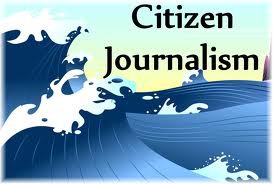Strategic Staffing is a future oriented and goal directed method of staffing an organization such that it supports the organization’s business strategies and at the same time enhances organizational effectiveness in the long run. Staffing in this context includes all movements of people into, through and out of the organization e.g. recruitment, promotion, redeployment etc. Other human resource (HR) activities such as employee classification and development are also included in the process of Strategic Staffing.
How is Strategic Staffing different from Traditional Staffing?
Traditional staffing is less tied to the business strategy and is mostly done in response to an opening. Strategic Staffing involves long term planning and is more aligned with firm’s business strategy and other areas of HR when compared to the traditional staffing. Unlike traditional staffing it involves a continuous effort towards improvement of employees. Moreover under the Strategic Staffing process the candidates are evaluated on their long term potential and job success with a pre-defined goal in mind.
Need for Strategic Staffing
Shortages observed in certain job categories combined with the benefits of retraining and redeployment of current workforce has motivated HR managers to strategically staff their organizations as to meet future needs in an efficient manner. Strategic Staffing methods enable the organizations to improve current staff utilization and address critical HR issues in a more organized and integrated manner. Moreover it allows for recruitment, development and deployment of talent required to meet the future needs of the organization.
Components of Strategic Staffing
Workforce Planning: It involves predicting future employment needs of an organization depending upon the organization’s business strategies for future and the availability of the current employees. It aims to meet the employment needs of the organization by filling the gaps between the current skills in the organization and the skills required in executing the organization’s business strategies.
Sourcing talent: It involves locating the qualified individuals and job markets as per the requirement. A job offer is then designed as to attract the good recruits for the job. The number and the type of employees willing to apply and take up job at an organization is a result of this process.
Recruitment: This step involves evaluating and assessing the candidates for the job and hiring the best ones. Also it involves putting together job offers that the chosen candidates find attractive enough to join the organization. This step involves a certain amount of negotiation between the employer and the employee.
Deployment and development of talent: This step involves assigning the recruit to the appropriate role in the organization and familiarizing him with the existing employees and the organization overall. Also giving them the necessary training as to do their respective jobs. Career development and succession planning lead to the enhancement of deployment options.
Retention of talent: This steps involves identifying and retaining the high performing employees in the organization. The HR managers aim to keep such employees committed to the organization. Retention of employees saves resources which would be used in finding replacement for such employees.





15 Comments. Leave new
good one:)
nicely elaborated!
nicely structured!
good…
Well written
Well exolaw and informative article.
Explained..***
Well written.
good job
Nice article.
Good One 😀 ..
great work.
Well done!
nice 🙂
Good efforts, Yuvraj!